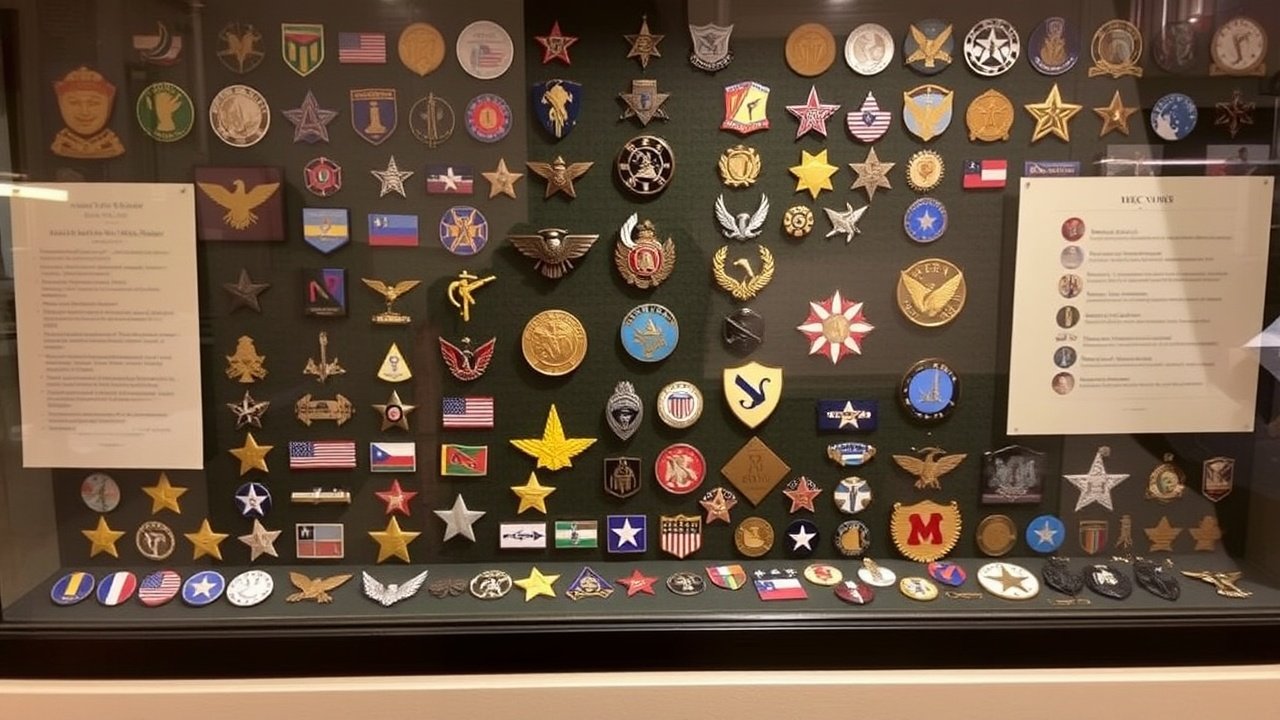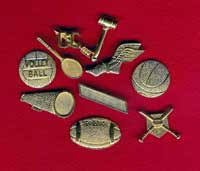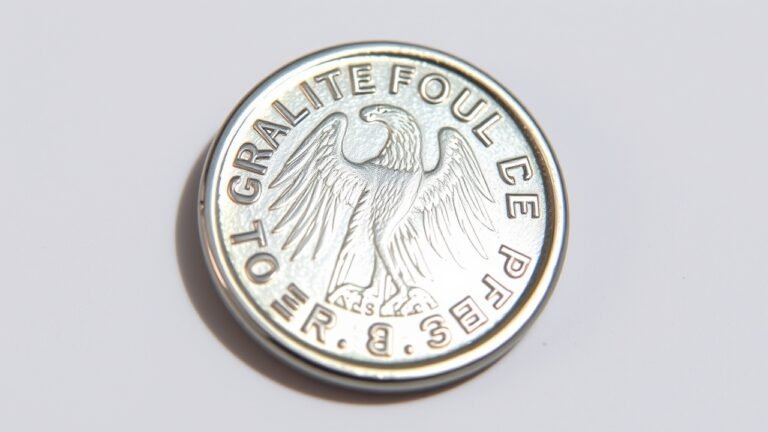US Army Uniform: Patches, Badges, and Military Patches
Design Variations: Vintage and Modern Styles The United States Army…
Design Variations: Vintage and Modern Styles

The United States Army uniform is more than just clothing; it’s a canvas displaying a soldier’s achievements, division affiliation, and military occupational specialty. Army patches, badges, and insignia are meticulously placed according to army regulation, each holding a specific meaning and reflecting the individual’s and the unit’s history. Understanding the significance of these patches and insignia provides insight into the rich traditions and structure of the US Army.
Understanding Army Patches
Types of Patches
The United States Army utilizes a wide variety of army patches, each serving a distinct purpose. Shoulder sleeve insignia, or division patches, identify the unit to which a soldier is assigned. These military patches often depict historical events, symbolic animals, or geographic features associated with the division. Skill badges, like the parachutist badge, signify specialized training and qualifications. Rank patches indicate a soldier’s pay grade and leadership position within the U.S. military. Some unit patches, especially those representing combat service, can be particularly evocative, showcasing the unit’s history and accomplishments. The Institute of Heraldry provides guidance and approval for the design and usage of these important patches and insignia.
Placement of Army Patches
The correct placement of army patches on the army uniform is critical and dictated by army regulation. Typically, the shoulder sleeve insignia, or division patch, is worn on the left shoulder sleeve of the army uniform, signifying the soldier’s current unit. If a soldier has served in combat, the combat patch, also known as the former wartime service shoulder sleeve insignia, is worn on the right shoulder sleeve. Rank patches are positioned on both sleeves, indicating the soldier’s rank. Badges are authorized for wear above the name tape on the left side of the dress uniform and on specific locations on the army green service uniform. Maintaining proper placement ensures that the military uniform accurately reflects a soldier’s service and achievements within the United States military.
Significance of Division Patches
Division patches, as integral parts of the military uniform, hold immense significance within the US Army. These patches and insignia represent a soldier’s affiliation with a specific division, fostering camaraderie and a sense of belonging. For example, the 1st Infantry Division‘s patch, known as the “Big Red One,” is instantly recognizable and evokes a sense of pride and tradition. Similarly, the 101st Airborne Division‘s patch symbolizes the division’s history of airborne assaults and its elite status. Whether it’s an infantry division, a cavalry division, or another specialized unit insignia, each division patch represents a unique legacy and contribution to the United States Army.
Badges in the US Army
Combat and Special Badges
Within the United States Army, badges serve as visual representations of a soldier’s accomplishments and specialized skills, affixed proudly to their military uniform. These patches and insignia are more than mere decoration; they signify rigorous training, exceptional performance, and unwavering dedication to the U.S. military. Combat badges, such as the Combat Infantryman Badge (CIB), recognize soldiers who have personally engaged in ground combat. Special skill badges, like the Parachutist Badge, also known as parachute wings, denote proficiency in specific areas. Displaying these badges on the army uniform signifies a soldier’s commitment and expertise, enhancing the overall prestige of the US Army. Each emblem holds a story of dedication and sacrifice, reflecting the core values of the United States Army and adding to the visual narrative of the army uniform.
Qualifications for Earning Badges
Earning badges in the US Army is a rigorous process, demanding exceptional skill and dedication from soldiers striving for recognition. The Department of the Army sets stringent standards for each badge, ensuring that only those who meet the precise qualifications are authorized to wear the emblem on their army uniform. For instance, the Combat Infantryman Badge requires soldiers to have actively participated in ground combat against the enemy. Similarly, the Parachutist Badge necessitates successful completion of a parachute jump course. These qualifications ensure that badges represent genuine expertise and achievement, maintaining the United States Army’s reputation for excellence. These qualifications are usually detailed in the army regulation, ensuring heraldry standards and uniformity within the military uniform standards of the US Army.
Historical Overview of Army Badges
The history of army badges within the US Army reflects the evolving nature of warfare and the increasing specialization of military skills. Initially, patches and insignia primarily denoted unit insignia and rank patches, but over time, the United States Army introduced badges to recognize specific achievements and qualifications. The first badges were often simple embroidered designs on the army uniform. As the U.S. military modernized, badges became more intricate, reflecting the complexity of modern warfare. Today, badges continue to evolve, with new patches and insignia being introduced to recognize emerging skills and contributions to the army. The evolution of these emblem and unit patches, from simple designs to intricate symbols, tells the story of the army’s rich heritage and the dedication of its soldiers who wear them on their olive drab or army green military uniform. The Institute of Heraldry ensures that the rich history of the army is reflected on each patch.
Uniform Regulations and Standards
Overview of the US Army Uniform Regulations
The United States Army maintains strict army regulation regarding the wear and appearance of the army uniform. These regulations are comprehensively outlined in official documents published by the Department of the Army, ensuring uniformity and professionalism across all ranks and divisions. These guidelines cover everything from the proper placement of army patches and insignia to the authorized combinations of uniform components. Adherence to these regulations is paramount, as the military uniform represents not only the individual soldier but also the entire US Army. These regulations define acceptable grooming standards, the wear of badges is authorized, and the appropriate occasions for different army uniform variations, such as the army green service uniform or the dress uniform. Failure to comply with these regulations can result in disciplinary action, underscoring the importance of understanding and adhering to the army‘s standards.
Differences Between Combat and Dress Uniforms
The United States Army distinguishes between combat and dress uniforms to suit different operational environments and formal occasions. The combat uniform, often in olive drab or camouflage patterns, prioritizes functionality and durability, allowing soldiers to effectively perform their duties in the field. It typically features fewer embellishments and focuses on practicality, such as cargo pockets and reinforced materials. In contrast, the dress uniform, such as the army green service uniform or the blue dress uniform, emphasizes presentation and formality. It is worn during ceremonies, formal events, and other occasions where a polished appearance is required. The dress uniform often features more prominent displays of army patches, rank patches, and badges are authorized, showcasing a soldier’s achievements and division affiliation. The patches and insignia differ between these uniforms. Understanding the differences between these military uniform types is essential for soldiers to maintain appropriate decorum and operational readiness, and army regulation outlines what is acceptable, upholding the US Army standard.
Care and Maintenance of Military Uniforms
Proper care and maintenance of the military uniform are essential for maintaining a professional appearance and prolonging the lifespan of the clothing. The Department of the Army provides guidelines on cleaning, pressing, and storing various uniform components. Regular cleaning helps to remove dirt, stains, and odors, preventing the buildup of contaminants that can degrade the fabric. Proper pressing ensures a crisp and presentable appearance, while correct storage protects the uniform from damage and fading. Particular attention should be paid to army patches and insignia, ensuring that they remain securely attached and free from damage. Soldiers are expected to adhere to these standards, as the condition of their military uniform reflects their professionalism and attention to detail. Neglecting the care of the army uniform can result in a substandard appearance, undermining the pride and discipline associated with the United States Army and its heraldry. The care of the army green or olive drab uniform is just as important as the proper display of rank patches, unit insignia, and division patches.







